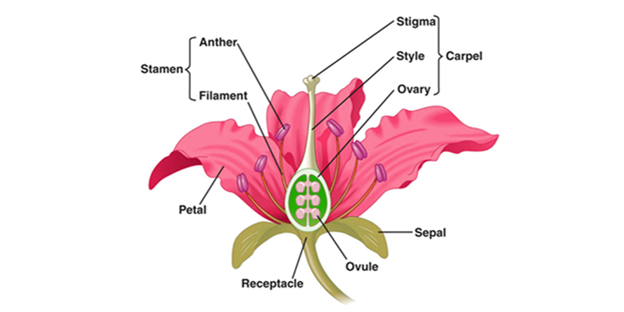Morphology is a branch of science that deals with the study of the external structure of plants. The flowering plant consists of a shoot system, a root system and an axis.
Root System
The flowering plants consist of a lengthy cylindrical axis that is differentiated in an underground root system.
The root is the non-green descending underground part that lacks internodes, nodes, buds and leaves. The elongation in Dicotyledon plants leads to the formation of the primary root. The primary root grows in the soil, and bears root lateral roots called secondary roots, tertiary roots, etc.
Types of Root System
The primary roots, with their branches, form a tap root system, such as the mustard plant. Primary roots have a short life span and get replaced by larger roots later on.
The roots that arise from the bottom of the base are called the fibrous root system, such as grass, and this kind of system is common to mocotyledon plants. The roots that arise from the portion other than the radicle are called adventitious roots, such as monestra and banyan tree.
Regions of the Root
The root consists of five major areas mentioned below.

- The root cap is the structure which covers the apex of the root and helps in protecting the apex of the root.
- The meristematic activity region is located a few millimetres over the root cap. The cells of this portion hold the property of iterative divisions that are required for the growth of plants.
- The portion of elongation is situated proximal to the area of meristematic activity, which is required for root elongation.
- The area of maturation is present proximal to the region of elongation, and these cells differentiate and mature gradually. The root hairs rise from the matured region, which helps in water absorption and minerals from the soil.
Functions of the Root
- To provide appropriate anchorage to the plants.
- To absorb minerals and water from the soil.
- Synthesis of the plant growth.
- To store reserved food elements.
Shoot System
It is an aerial system over the soil and belongs from the plumule and consists of branches, a stem, flowers, fruits and leaves.
Stem
It conducts minerals, water and food material, and flowers, seeds, and roots form the reproductive parts. The stem bears internodes and nodes. The point from which the leaf rises is called the node, and the part in between the nodes is called the internode.
Leaf
A leaf is a green flattened and exogenous lateral growth which arises from the node of a branch. It is a special organ of gaseous exchange and photosynthesis.

Parts of Leaf
The node bears a bud in its axil. The leaf is connected to the stem by its base and consists of two lateral structures known as stipules. The leaf base in monocots is swollen to produce pulvinus. The leave’s stalk is called a petiole. The exposed green portion of the leaf is called the lamina, which bears the veinlets. The arrangement of veins on the leaf is called venation.
Flower
A flower is a modified shoot, and the arrangement of a flower on the floral axis is called an inflorescence. There exist two kinds of inflorescence, namely cymose and racemose.
In the case of racemose inflorescence, fresh flowers are formed at the tip of the inflorescence, such as snapdragon. In cymose inflorescence, new flowers are formed at the bottom of the inflorescence.
Structure of the Flower
Every flower consists of four whorls, namely petals, carpels, sepals and stamens. The sepals are leafy structures that encompass the flower bud. The petals have highlighting colours to attract insects for pollination.
The androecium is the male reproductive structure, while the gynoecium is the female reproductive structure.

The gynoecium consists of carpels which comprise three structures, namely style, ovary and stigma. The ovary consists of ovules that produce the seed, while the stigma is the place of landing pollen, and finally, the ovary forms the fruit.
The androecium is the male part of the flower, which consists of stamens. It is composed of filament and anther. The anther holds the male gamete, pollen grains.
Comments